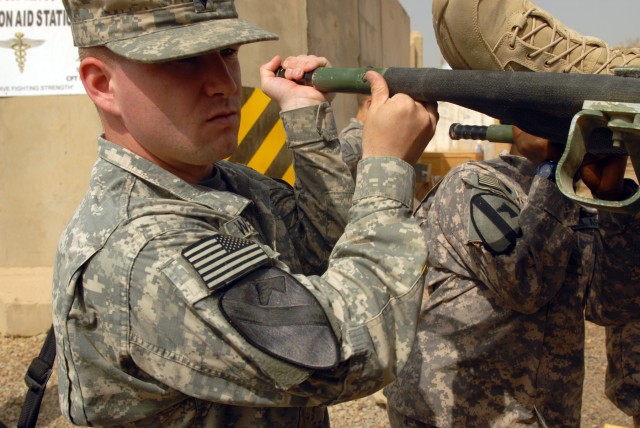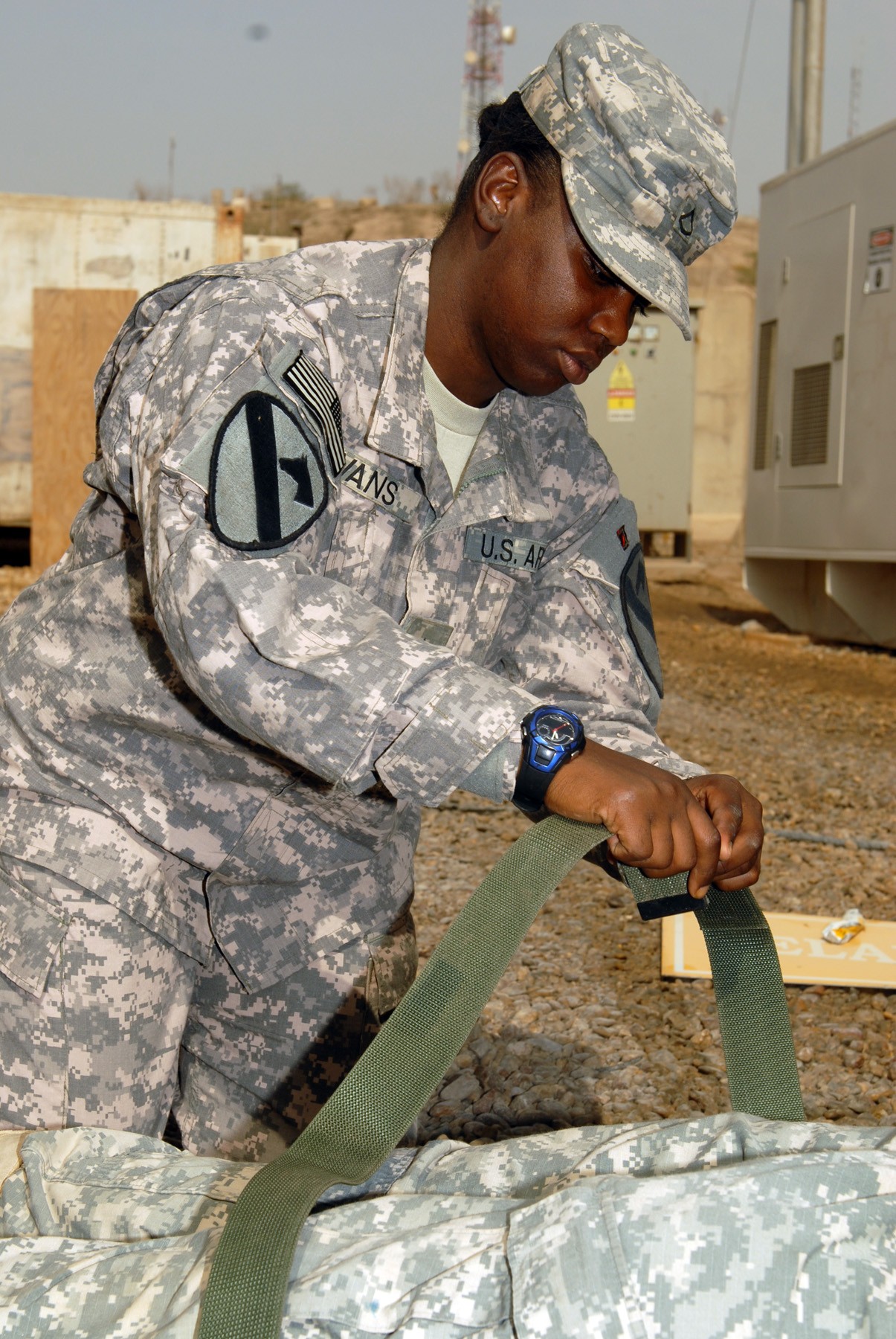BAGHDAD - Every Soldier is an infantryman, no matter their military occupational specialty. In the event of a casualty, every Soldier must also be a medic.
Division Special Troops Battalion, 1st Cavalry Division Soldiers gained more knowledge about taking care of injured Soldiers during an ambulance evacuation class at the DSTB aid station on Camp Liberty, here, Oct. 9.
The class focused on improving their skills in helping fellow Soldiers survive on the battlefield. Specifically, the class covered the teamwork required to move injured Soldiers by litter to an ambulance.
Training instructor Spc. Armando Reyes, of San Antonio, Texas, said the class helps Soldiers learn how to assist medics and set up triage for casualties, or prepare Soldiers for evacuation in the absence of a medic.
"In case an [improvised explosive device] attack should occur, Soldiers who are trained in this class can help the medic load the patient in the next vehicle," said Reyes. "We train them so that just in case something goes wrong with us, they know what to do."
While one Soldier played the part of the casualty, four other Soldiers rehearsed the coordinated action of picking up a litter and carefully placing the litter inside an ambulance. It requires the teamwork of all four Soldiers to carry a litter. The training seemed well received by the Soldiers.
"One of the things I learned that they didn't teach us before was using the straps," said Spc. Christopher Myers, of Lowell, Ark. "We never learned how to put them in an ambulance either."
Myers was one of several psychological operations specialists assigned to the 362nd Tactical Psychological Operations Company, DSTB, 1st Cav. Div., who took part in the training.
"It's a good class for each of us to know because you never know what can happen. This is a combat zone," said Pfc. Kamella Givans, a supply specialist assigned to Company A, DSTB, 1st Cav. Div. "This is my second time in this class and it's never too much."
Although every deployed Soldier is required to take the combat lifesaver course, extra training is always helpful, according to Reyes. The very real threat of an indirect fire attack means that Soldiers may have to carry casualties to the casualty collection points for ambulance evacuation.
"You've got to make sure that you put them in the right place so that they get to the quickest location or get the right treatment at the quickest time," said Reyes. "It allows the Soldier to react quicker and if he knows how to do the job, he can help out the medic."
The journey of learning that is a Soldier's life never ends, and the ambulance evacuation class is just one part of helping ensure that every Soldier knows how to be a medic save the life of a fellow Soldier.






Social Sharing